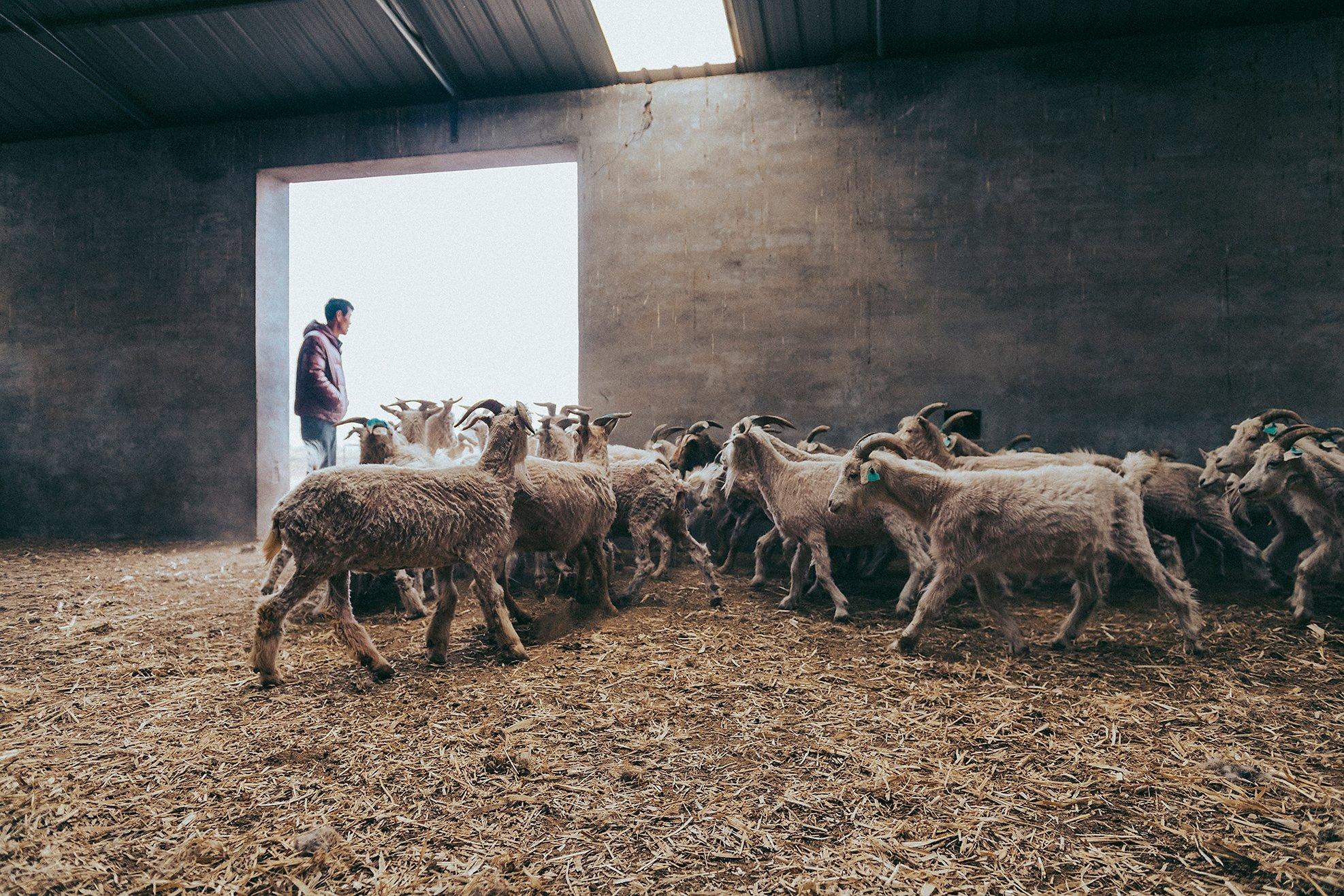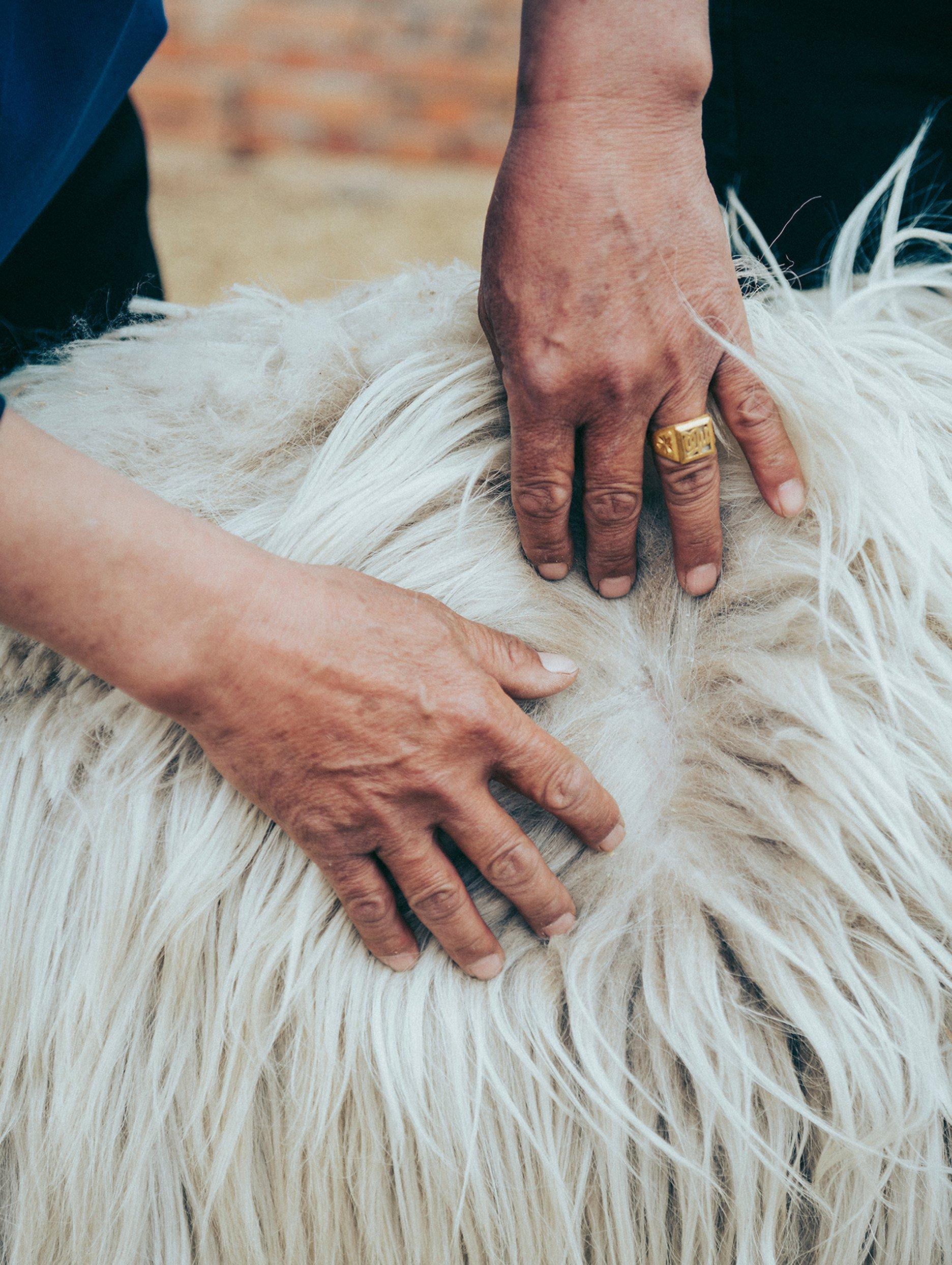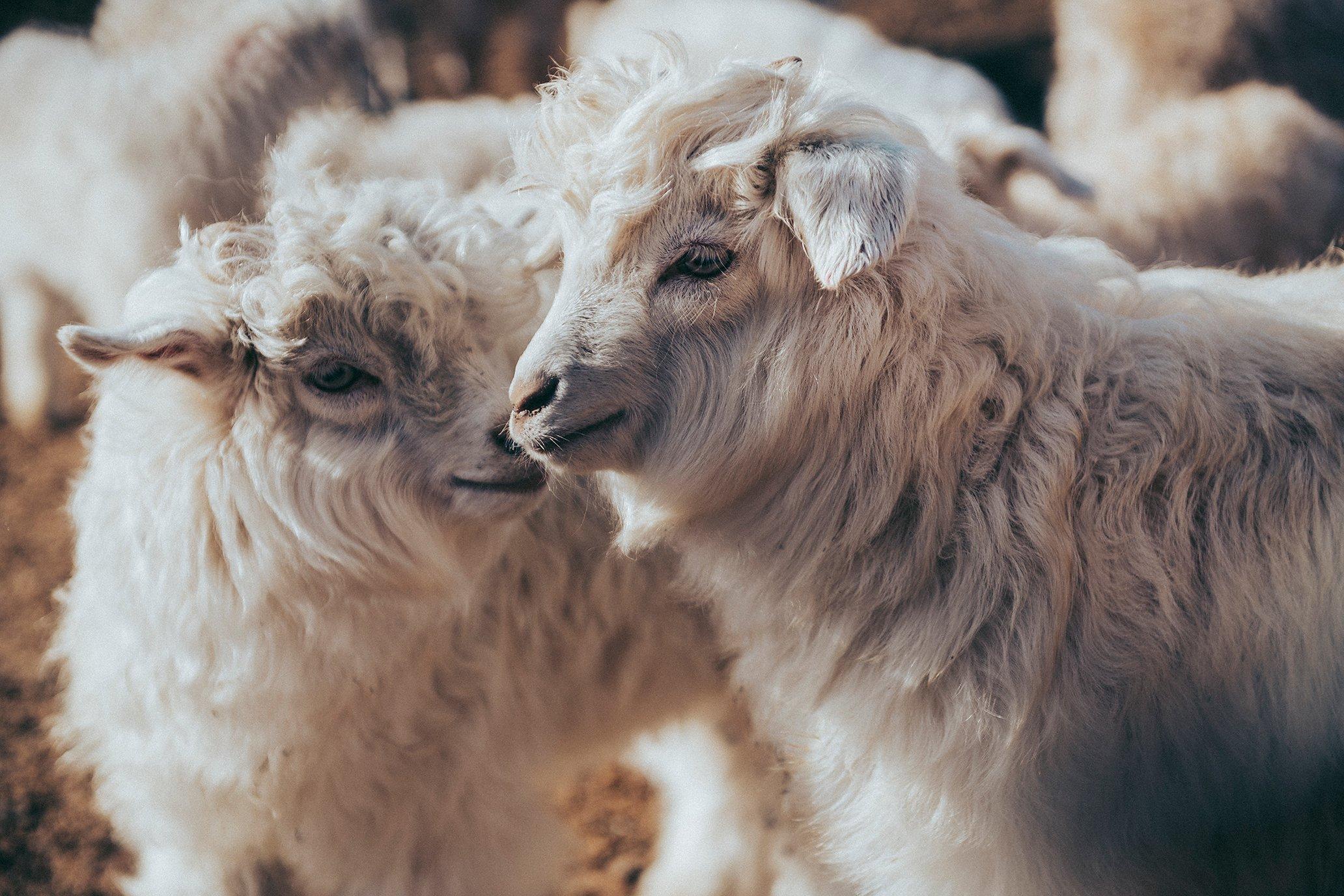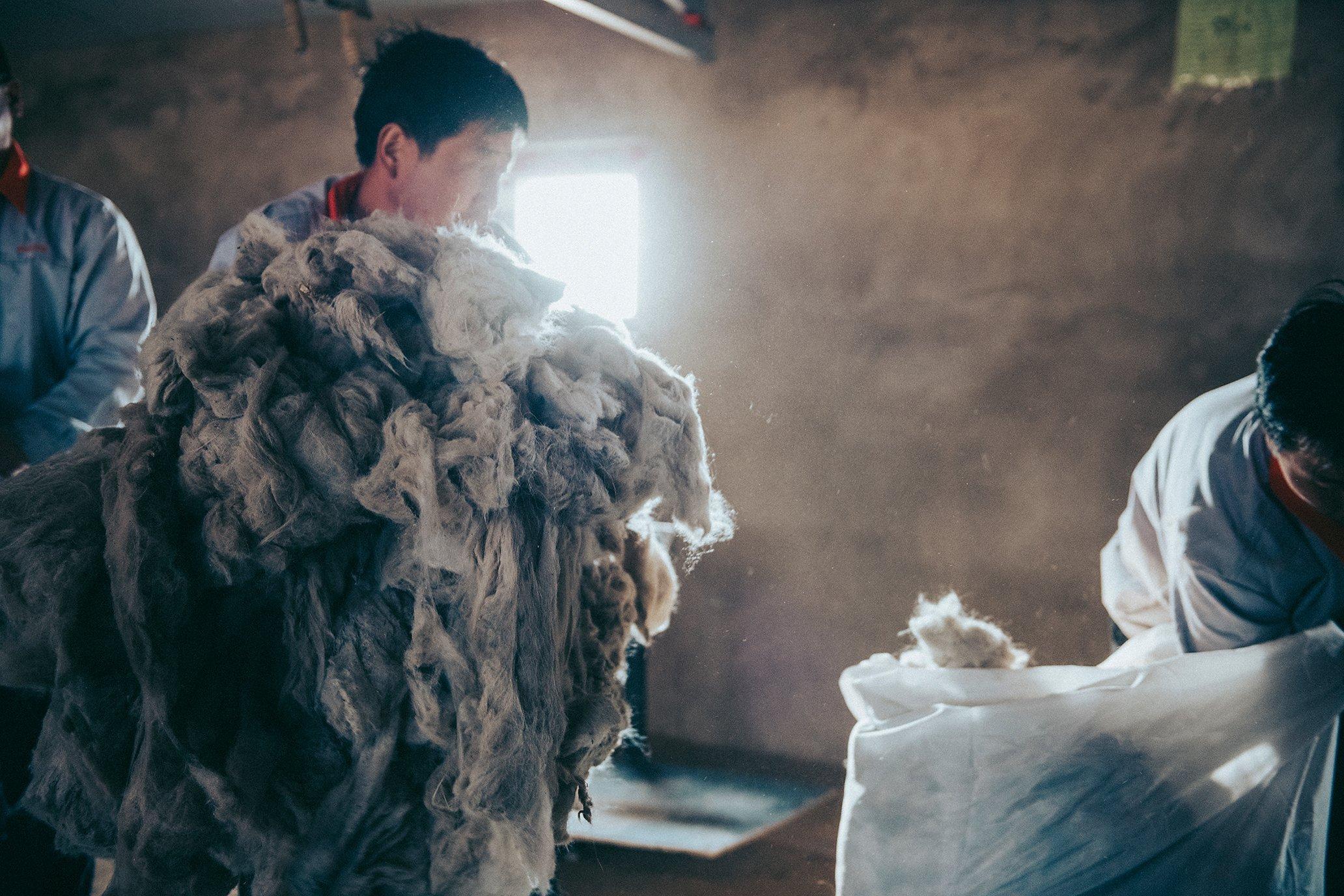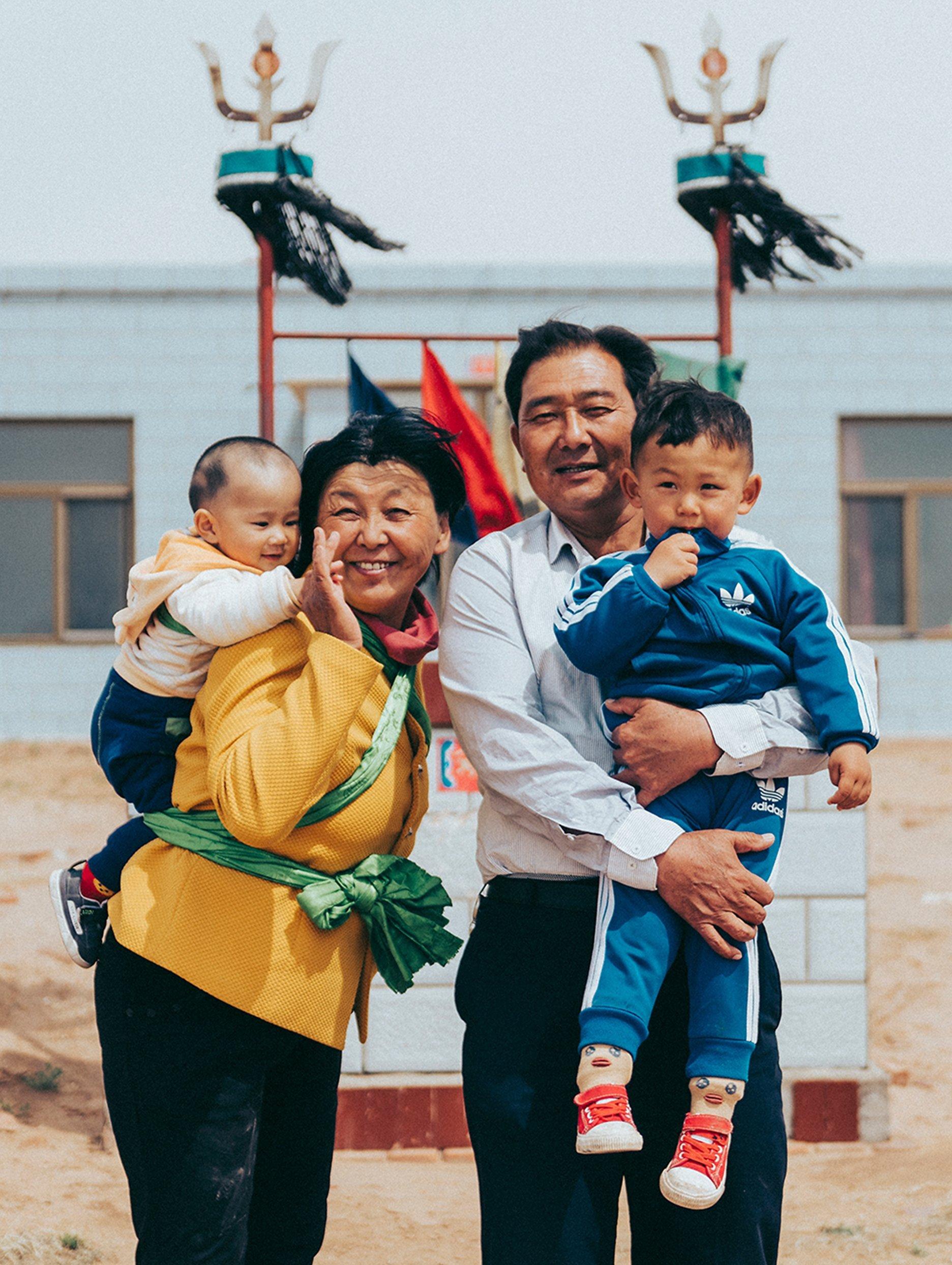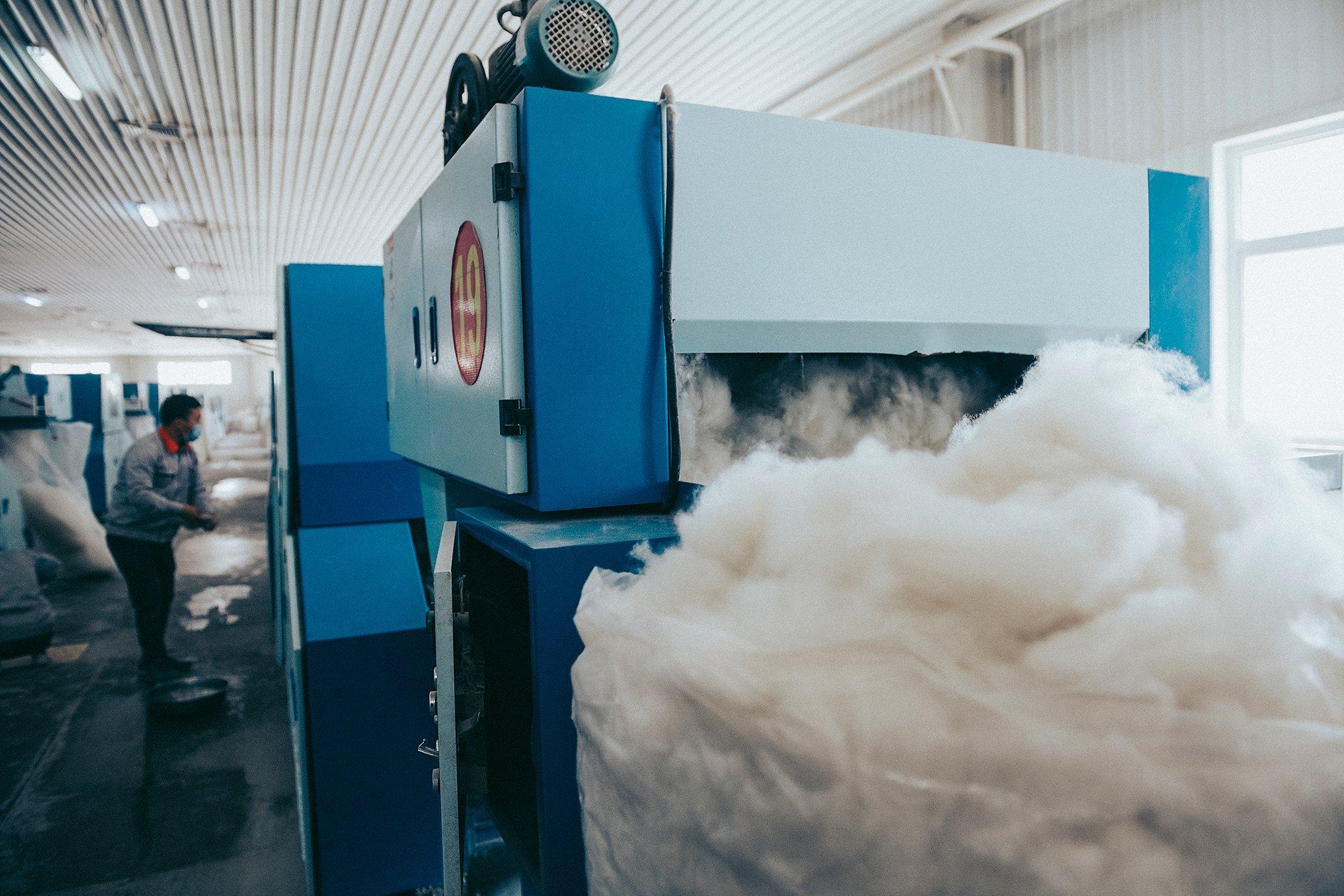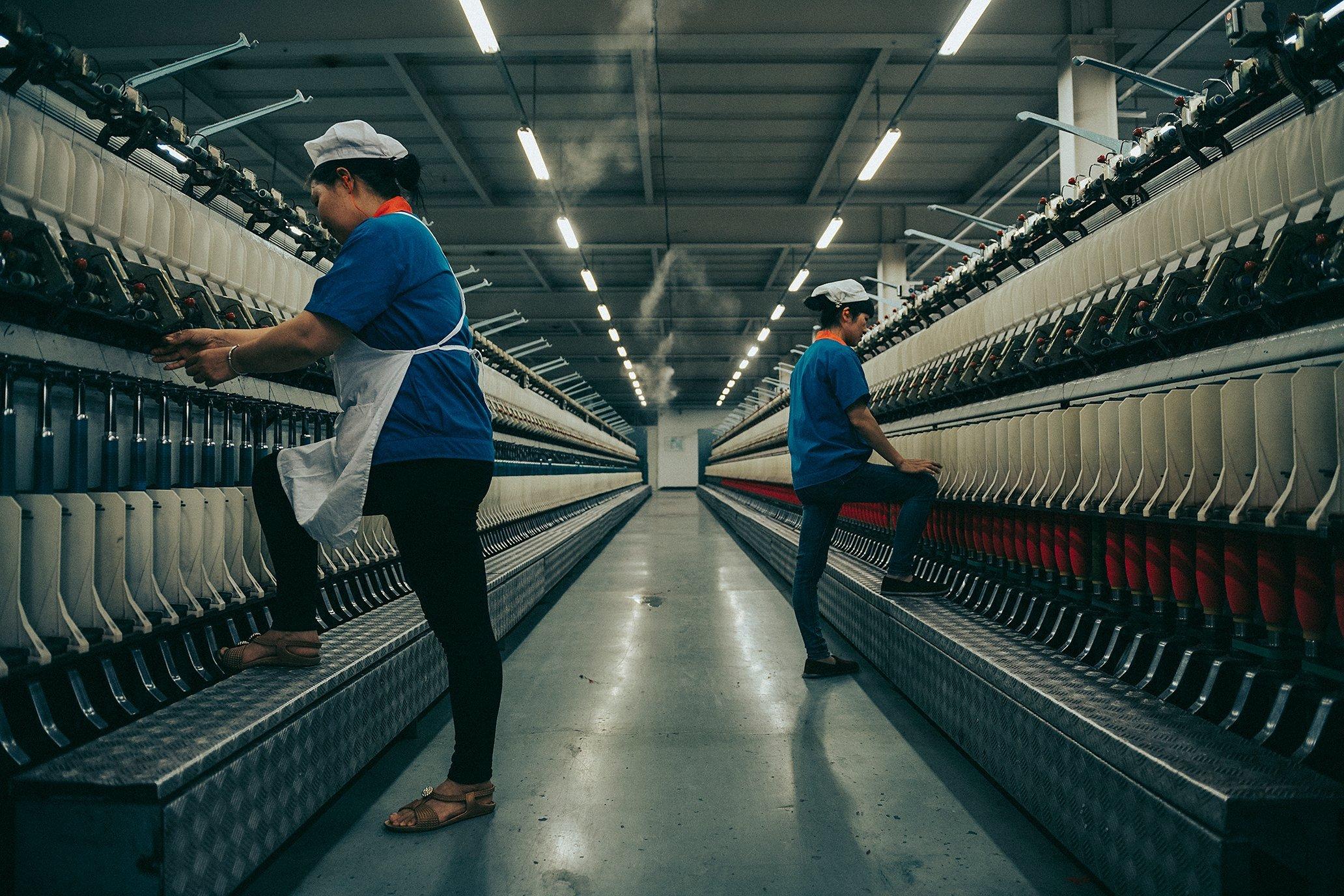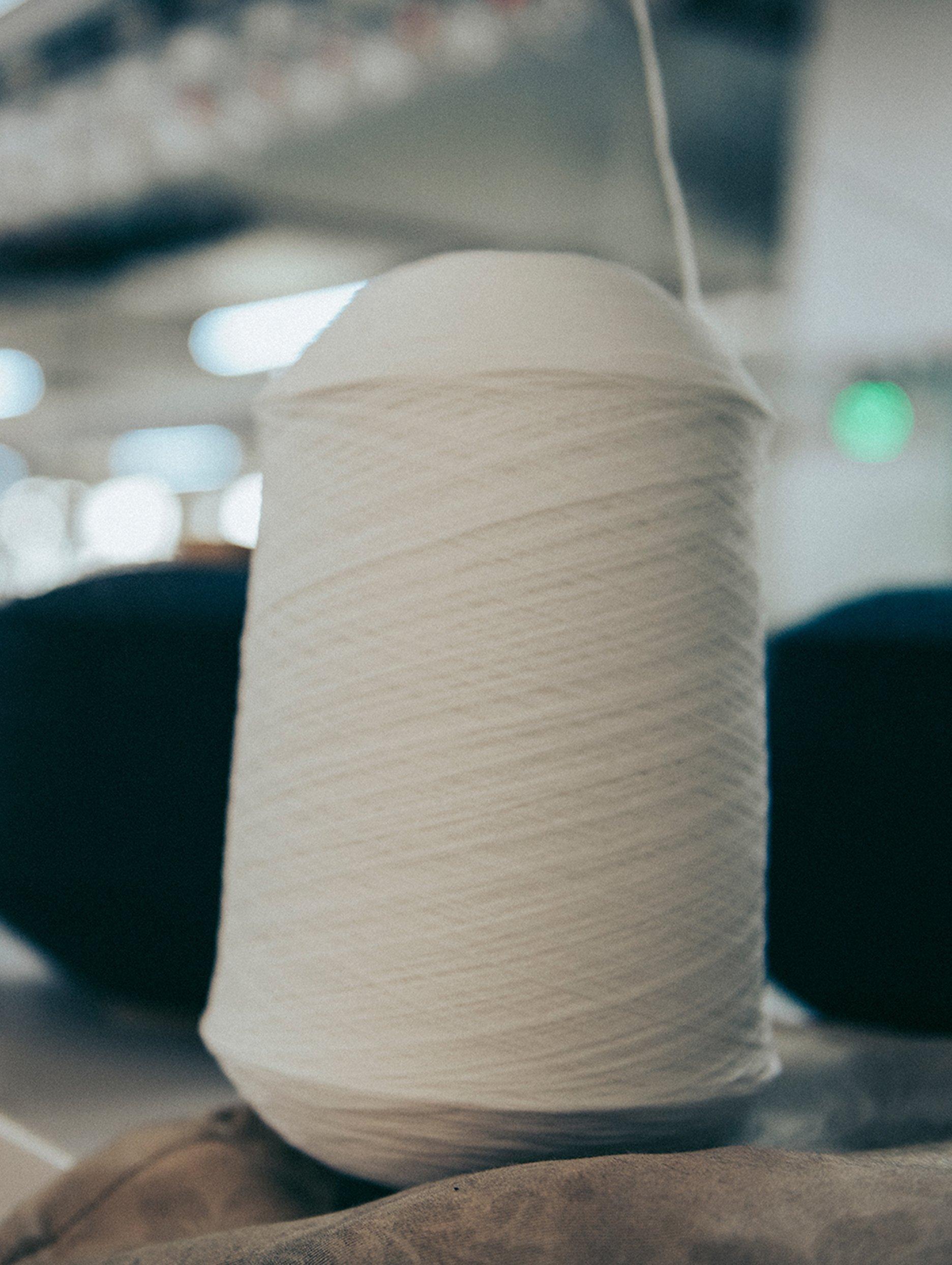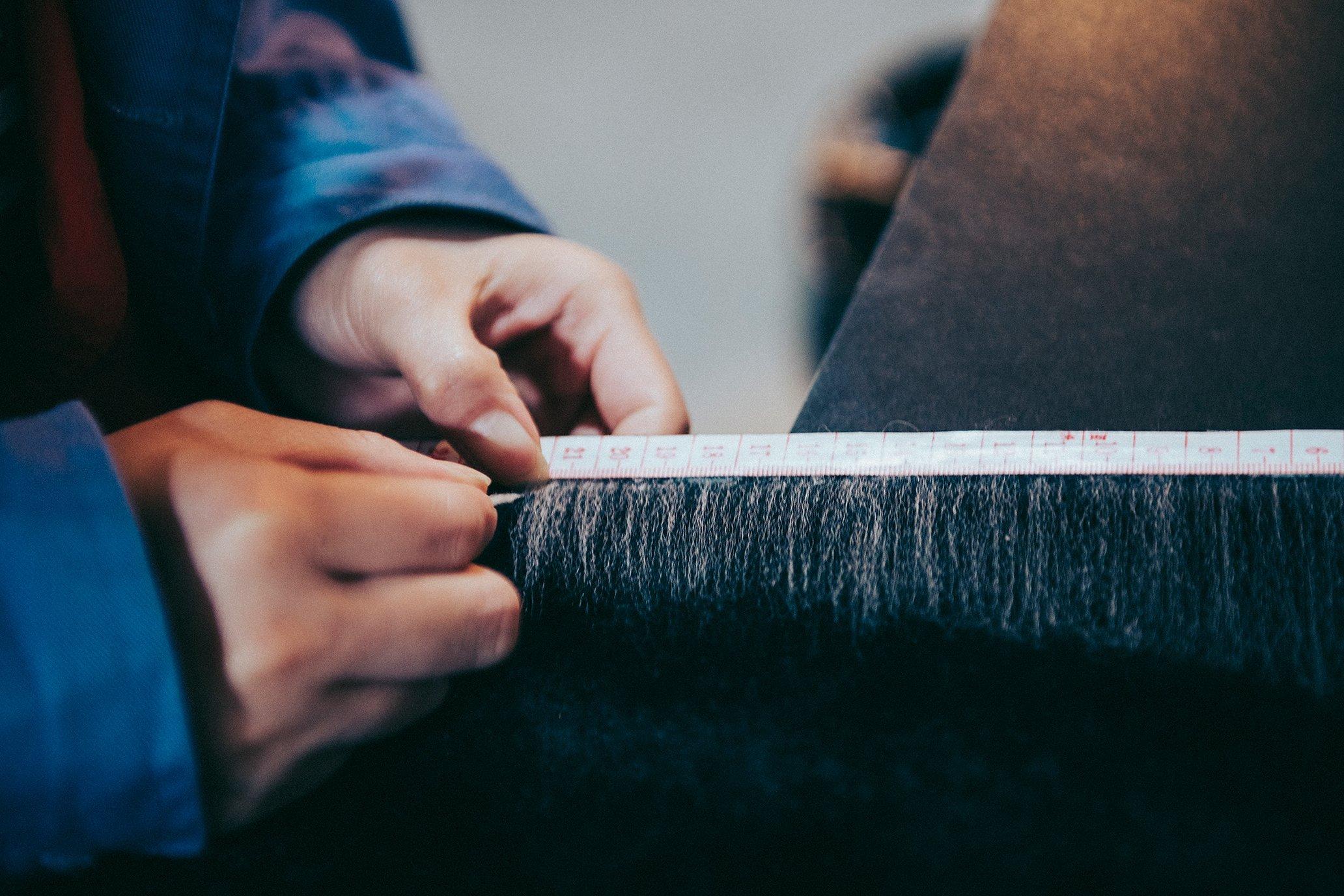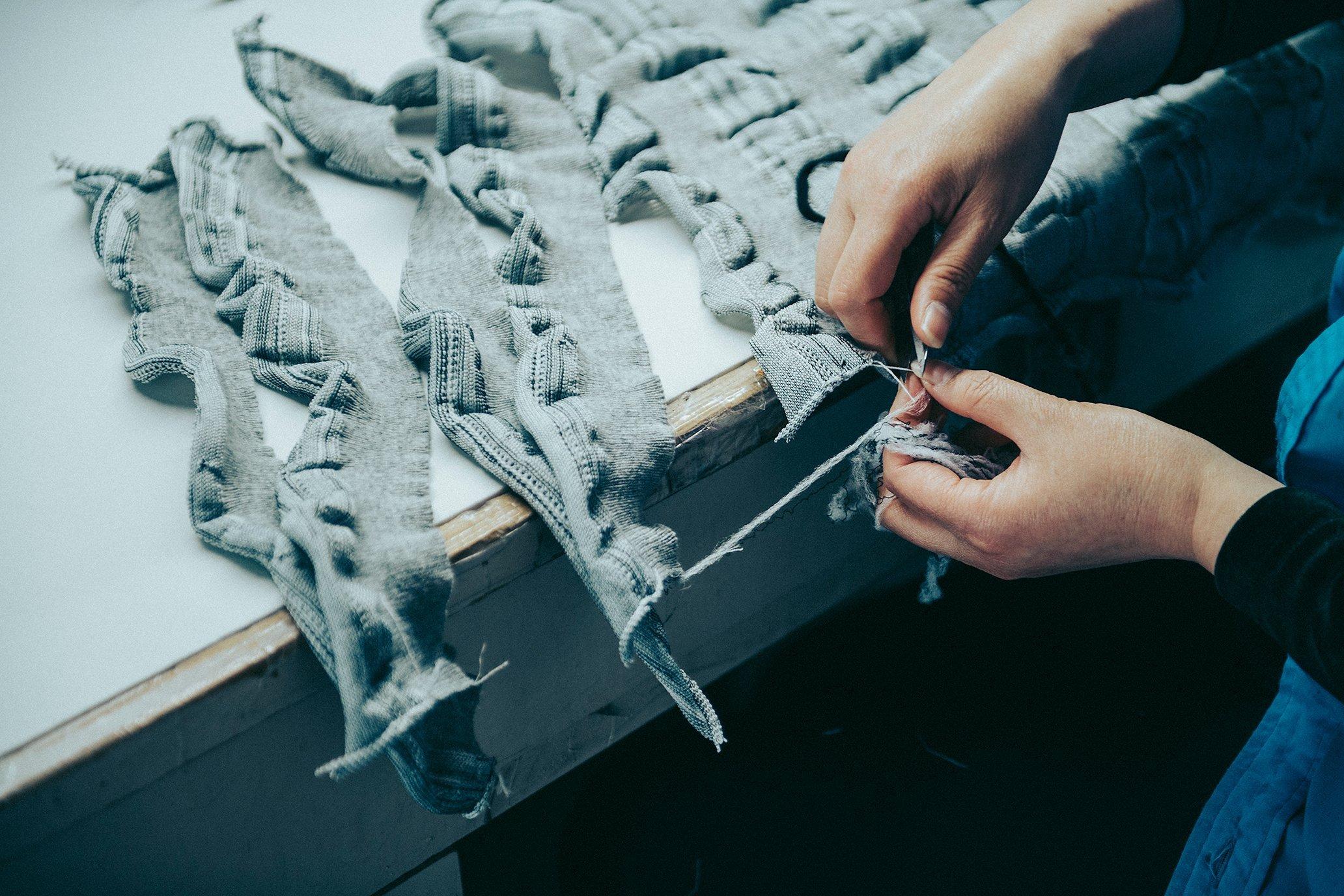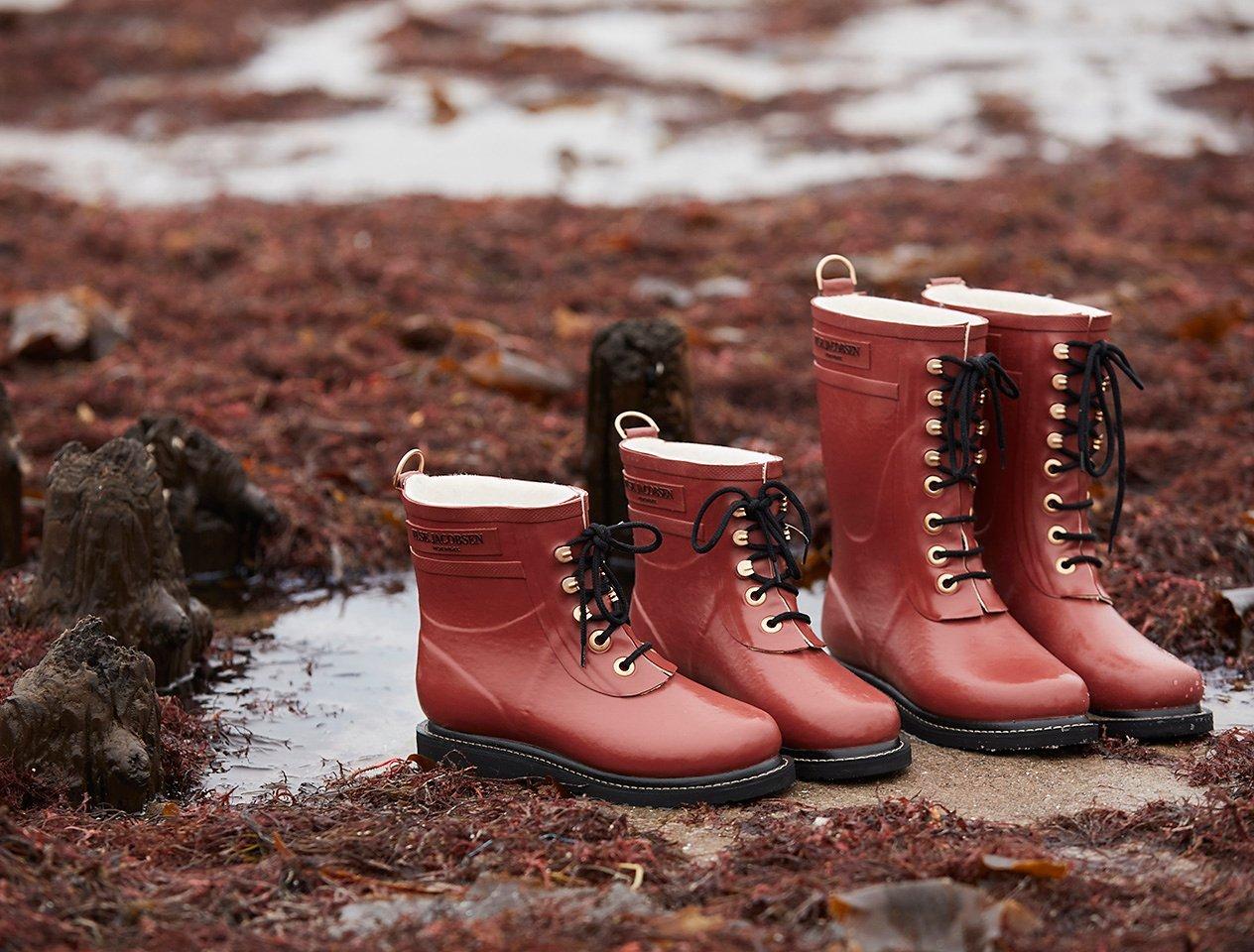The story of our cashmere
Our cashmere is high quality, stylish and timeless. Here, you can learn more about how to care for your product to extend its lifespan and reduce your environmental footprint.
How to look after your cashmere
Washing and drying
Check the care label to see if your cashmere is machine washable or handwash only. We recommend that you don’t wash your cashmere after every use, as it can damage the delicate fibres.
- Handwash: Add a little cashmere detergent to a bowl of cool water. Turn your garment inside out and gently swirl it around for about 30 seconds. Let it soak for up to 30 minutes before rinsing with cold water. Be gentle – avoid wringing or stretching it.
- Machine washable: Turn your cashmere inside out and select a 30-degree delicate cycle. Protect it further by using a mesh washing bag. Use a non-biological detergent specially formulated for wool and silk. Avoid using fabric conditioner, otherwise your knitwear may thin over time and develop holes.
- Drying: Carefully squeeze out excess water by scrunching your garment into a ball – avoid twisting or wringing. Reshape while damp and dry it flat to keep its shape. Never tumble dry your cashmere as the heat can cause it to felt and damage the fibres.
Product care
Our expert advice to help your cashmere look and feel its best for longer.
- Pilling is a natural characteristic of cashmere and is not a sign of poor quality. We use the longest, finest fibres and any pilling that may occur will form longer, thinner bobbles, which are easy to remove by hand with a cashmere comb or a fabric shaver. Lay the item flat, then comb in one direction using short, gentle strokes. Don’t do this too often or you risk thinning your cashmere.
- Fold your knitwear flat to avoid it becoming stretched or misshapen. Avoid hanging knitwear as this can distort its shape over time.
- Moths love cashmere so keep them away using cedarwood balls. Place the balls in the drawer with your cashmere and sand them gently a few times a year to keep their moth-repellent scent potent. You can also use our lavender sachets to deter moths.
- If you’re stowing away your cashmere pieces for summer, store them in a cool, dry place. Use breathable sealed bags, preferably cotton ones.
WE ARE PROUD OF THE WAY WE SOURCE OUR CASHMERE. HERE, WE UNRAVEL THE STORY BEHIND WHERE OUR CASHMERE COMES FROM.
John Lewis & Partners’ own-brand cashmere story starts on the other side of the world, in the region stretching from northern China into Mongolia. The harsh and unforgiving winters in the high plateaus of these areas are just right for the special type of goats from which our cashmere fibre is collected. Here, temperatures can drop to -40°C. The goats survive the season by growing an extra-fine coat underneath their weather-resistant guard hair – this is where the cashmere comes from. The cold climate and hearty lifestyle of the animals produce the longest, finest, softest fibres: some of the best cashmere in the world.
In the spring, as the goats start to naturally shed their winter coats, their fine underhair is removed. These fibres can only be collected once a year, with a limited amount available from each goat. Within our supply chain, a combination of hand-combing and shearing techniques are used. The herders always select the most appropriate method for the circumstances. In Mongolia, this tends to be hand-combing – and in China, it’s often shearing. A single cashmere jumper requires the fibre of around four goats (whereas one sheep produces enough fibre to make five wool jumpers).
For our herders, their livestock is their livelihood, so it’s important that the goats are well cared for. Not only that, but happy goats have healthier undercoats. As a responsible retailer, we choose our suppliers very carefully and are committed to ensuring high standards of animal welfare.
We care about how we make our products, the materials we use and the people who make them. We care about the environment too, and are working hard to create a more sustainable system for cashmere production, including improved land management practices.
We’re a pioneering member of the Sustainable Fibre Alliance (SFA), a non-profit, UK-based organisation working across the extended cashmere supply chain. Our commitment is to work with the SFA to develop a best practice standard and to work collaboratively with our peers to make sure we can have a wider and more lasting impact on the industry.
How is cashmere made?
It’s a lengthy, laborious process. First, the fibre is skilfully sorted by hand. Only the longest, finest fibres are selected. Whiter cashmere fibres need less processing to dye and so stay softer. Cashmere’s softness comes from the fact that its fibres are very fine – around four times finer than a human hair. After careful cleaning, the fibres are combed so they run in the same direction and any remaining impurities are removed.
Using the longest, finest cashmere fibres, our specialist cashmere spinners use their extensive expertise to twist a finer, softer, more rounded yarn, giving a deeper colour when dyed. We blend three to four different hues to make just one colour, ensuring each shade has a beautiful richness to it.
Usually the yarn is knitted into garment panels, which are then linked. Sometimes the whole garment is knitted in one go. Every tiny detail is considered from the fashionings around the armhole to which of our four weights or gauges is used to achieve the best, most luxurious feel. Throughout the process, regular tests are carried out, from checking the fibre diameter to the consistency of the yarn, through to final quality checks on the finished product.
A cashmere piece should be something you treasure. Created using only the best-quality fibre from carefully raised herds, we hope you love your cashmere as much as we do.
We believe that quality and value are about more than durability and price. Our teams take the time to craft our products and every detail is carefully considered. So you can rest easy in the knowledge you’re buying an investment piece that you’ll wear for years to come.


